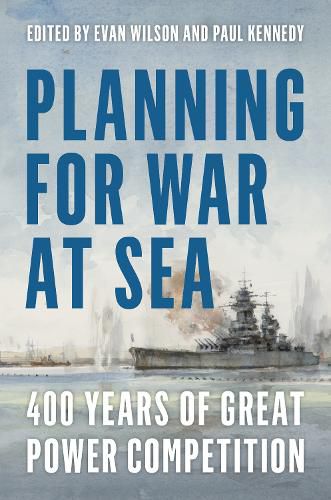Readings Newsletter
Become a Readings Member to make your shopping experience even easier.
Sign in or sign up for free!
You’re not far away from qualifying for FREE standard shipping within Australia
You’ve qualified for FREE standard shipping within Australia
The cart is loading…






How have navies contemplated possible enemies? How did they learn, or fail to learn, once operations began? How does this analysis inform today's planning for future conflict? These questions guide the noted historians and naval strategists who contributed to Planning for War at Sea. A central theme is the regular failure of navies' best-laid plans.
Covering four centuries of naval warfare, the chapters illustrate the challenges all navies faced when considering possible enemies. Even during the Age of Sail, ships were among the most expensive and long-term national endeavors. Navies therefore planned well in advance for future wars, usually without knowing their adversaries or how they would fight them at sea. Building a capable navy requires sustained investment in naval infrastructure long before the fighting starts.
In the final chapters naval strategists expand on this historical analysis to address how effectively or ineffectively today's three leading navies-Russia, China, and the United States-have configured themselves during the postCold War era in preparing for future great power conflict. This collection is an important work for strategists, scholars, and policymakers.
$9.00 standard shipping within Australia
FREE standard shipping within Australia for orders over $100.00
Express & International shipping calculated at checkout
How have navies contemplated possible enemies? How did they learn, or fail to learn, once operations began? How does this analysis inform today's planning for future conflict? These questions guide the noted historians and naval strategists who contributed to Planning for War at Sea. A central theme is the regular failure of navies' best-laid plans.
Covering four centuries of naval warfare, the chapters illustrate the challenges all navies faced when considering possible enemies. Even during the Age of Sail, ships were among the most expensive and long-term national endeavors. Navies therefore planned well in advance for future wars, usually without knowing their adversaries or how they would fight them at sea. Building a capable navy requires sustained investment in naval infrastructure long before the fighting starts.
In the final chapters naval strategists expand on this historical analysis to address how effectively or ineffectively today's three leading navies-Russia, China, and the United States-have configured themselves during the postCold War era in preparing for future great power conflict. This collection is an important work for strategists, scholars, and policymakers.